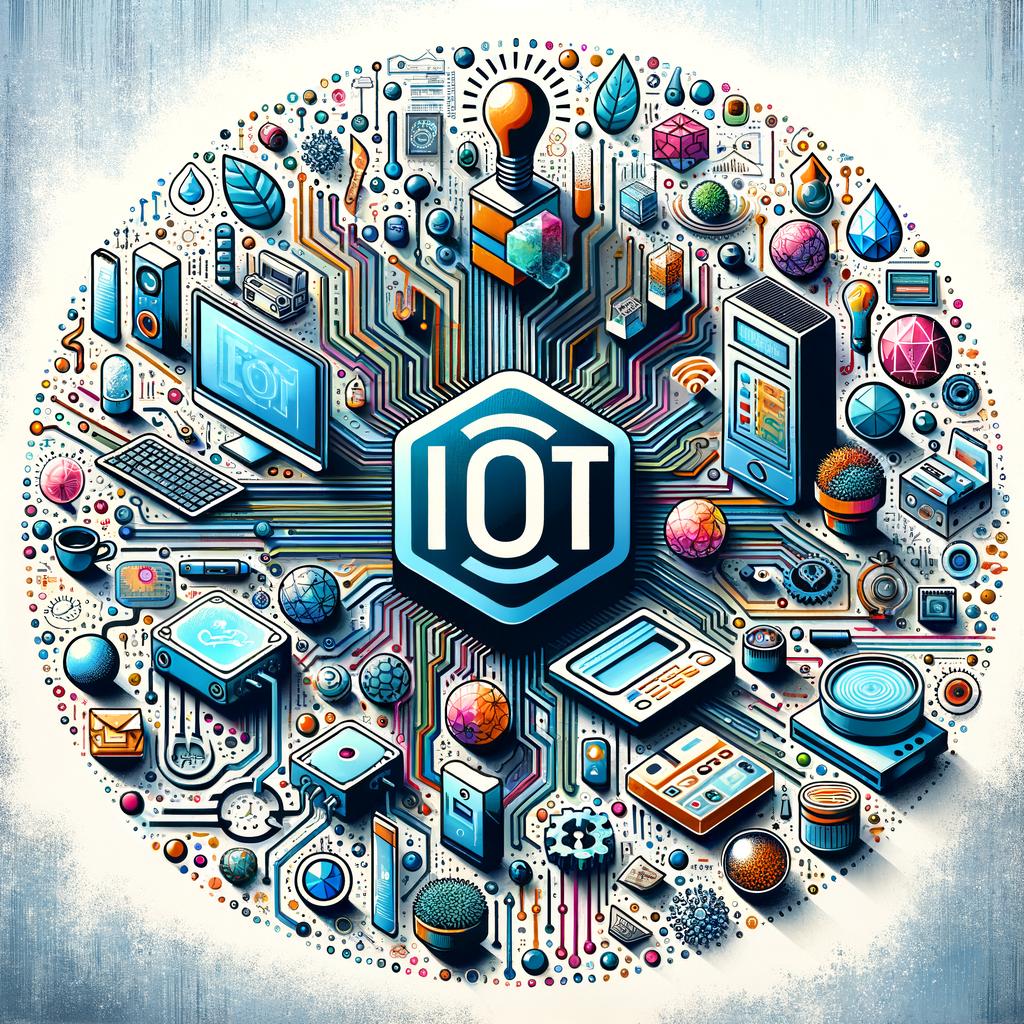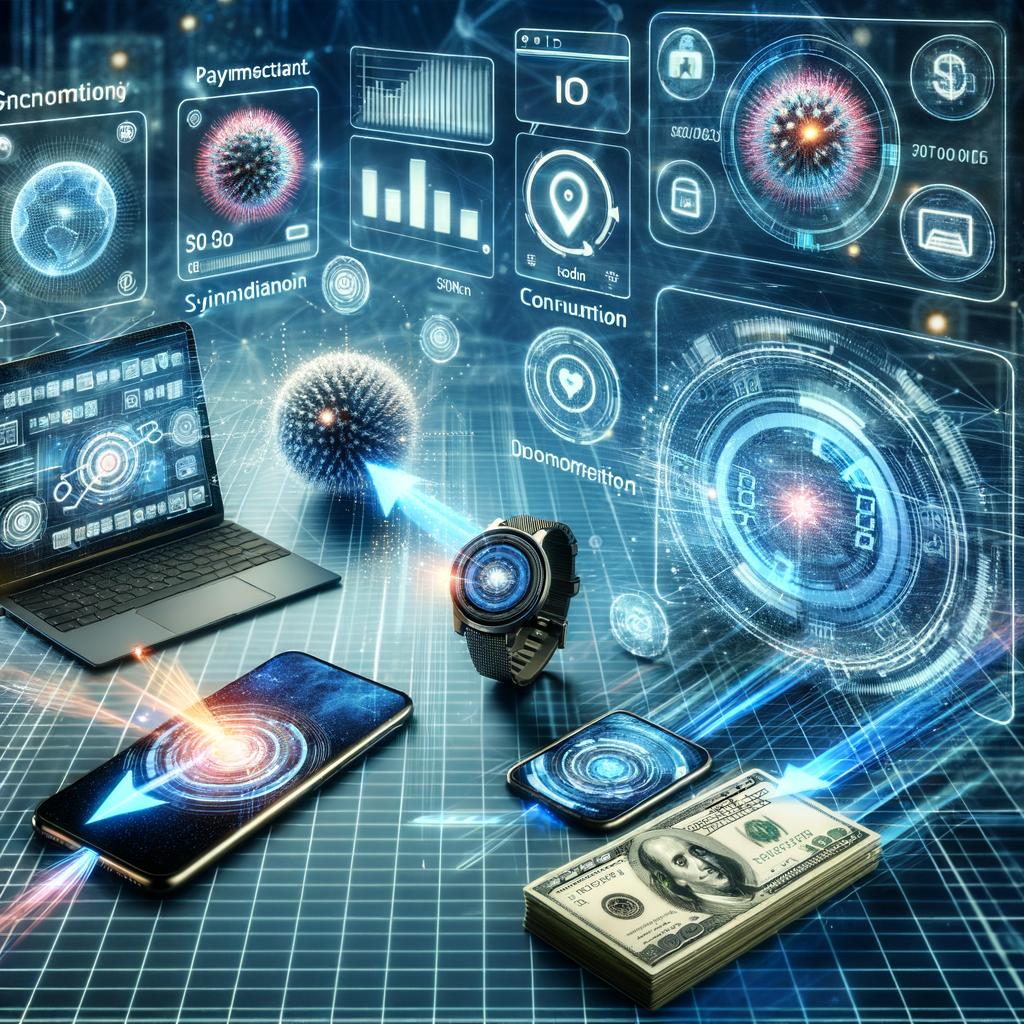The Role of IoT in Streamlining Payment Processes
Are you tired of fumbling through your wallet, desperately searching for loose change to pay for your morning coffee? Or dreading the moment when you have to stand in an endless queue just to swipe your credit card for a simple purchase? Well, fret no more! The Internet of Things (IoT) is here to revolutionize our payment processes, making them as smooth as butter melting on a warm pancake. Get ready to dive into the world where your smart devices take control and streamline your transactions in ways you never thought possible. So, grab your virtual shopping cart and let’s explore the fascinating role of IoT in transforming our payment experiences!
Understanding the IoT’s Impact on Payment Systems
The Internet of Things (IoT) has revolutionized the way we live, work, and now even make payments. With increasingly interconnected devices, from smartwatches to voice-activated speakers, the IoT has opened new avenues for streamlining payment processes. Gone are the days of fumbling with cash or fishing for credit cards; the IoT offers a seamless and convenient payment experience like never before.
One major impact of the IoT on payment systems is the rise of contactless payments. With near-field communication (NFC) technology, consumers can simply tap their devices on compatible payment terminals to complete transactions. This eliminates the need for physical cards and reduces the risk of fraud. Moreover, the IoT enables innovative solutions such as wearables that can serve as payment devices, providing users with a stylish and efficient way to make purchases on the go. Whether it’s a fashionable smart ring or a sleek wristwatch, these IoT-powered wearables add a touch of convenience to our daily lives.
To make the most of these advancements, businesses need to adapt their payment systems to embrace IoT technology. By integrating IoT-enabled payment devices and software, merchants can enhance the customer experience and improve operational efficiency. Retailers can utilize IoT data to gain valuable insights into consumer behavior, preferences, and trends, helping them make informed business decisions. Furthermore, IoT-powered payment systems offer businesses the opportunity to personalize customer interactions through targeted offers and tailored rewards programs. This not only fosters customer loyalty but also enhances the overall shopping experience.
WordPress table:
| Benefits of the IoT in Payment Systems | Examples |
|---|---|
| Enhanced convenience and efficiency | Tap-to-pay with wearable devices |
| Reduced risk of fraud | Contactless payments with NFC technology |
| Improved customer insights for businesses | Utilizing IoT data for targeted marketing |
| Personalized customer interactions | Reward programs tailored to individual preferences |
How IoT Technology Simplifies and Accelerates Payment Processes
IoT technology has revolutionized the way we approach payment processes, making them simpler and faster than ever before. With the integration of smart devices and sensors, IoT has streamlined payment transactions, offering secure and convenient options for both businesses and consumers.
One significant way IoT has simplified payment processes is through the implementation of contactless payments. With the rise of connected devices such as smartphones and smartwatches, users can now make payments with just a tap or a swipe. This eliminates the need for physical cards or cash, reducing the risk of loss, theft, or misplacement. Moreover, by using Near Field Communication (NFC) technology, IoT enables seamless communication between the device and the point-of-sale terminal, ensuring smooth and quick payment experiences for customers.
Another remarkable benefit of IoT in payment processes is the automation of recurring payments. Through IoT-enabled devices and applications, users can easily set up automatic payments for bills, subscriptions, or services. This eliminates the hassle of manual payments, ensuring bills are paid on time without any effort from the consumer’s end. Additionally, IoT technology can send timely reminders to users, notifying them of upcoming payments and preventing late fees or penalties. This feature provides convenience and peace of mind, saving both time and money for individuals and businesses alike.
Throughout the retail and financial industries, IoT has proven to be a game-changer when it comes to simplifying and accelerating payment processes. With the increasing adoption of smart devices, contactless payments, and automated billing, consumers and businesses can enjoy efficient and hassle-free transactions. Embracing IoT technology opens up a world of possibilities for the future of payments, promising even further advancements that will transform the way we exchange value.
Leveraging IoT to Enhance Security and Efficiency in Payment Systems
With the rapid growth in the Internet of Things (IoT), businesses are constantly seeking innovative solutions to enhance the security and efficiency of their payment systems. Leveraging IoT technology has become a game-changer, offering a wide range of benefits that streamline payment processes.
One of the key advantages of implementing IoT in payment systems is increased security. By connecting devices, such as payment terminals and mobile apps, businesses can ensure secure and encrypted transactions. IoT-enabled sensors and biometric authentication provide an extra layer of protection, preventing fraudulent activities. Additionally, real-time monitoring and analytics enable immediate detection of suspicious transactions, reducing the risk of data breaches and identity theft. With IoT-powered security measures in place, businesses can build trust with their customers, improving customer satisfaction and loyalty.
Moreover, the integration of IoT in payment systems brings about enhanced efficiency. Connected devices enable seamless communication between different stages of the payment process, making transactions faster and more convenient. For instance, when a customer makes a payment, IoT devices can instantly update inventory levels, triggering an automatic reorder to maintain stock availability. Furthermore, IoT-powered data analytics can provide valuable insights into customer buying behaviors, allowing businesses to personalize offers and improve customer engagement. By leveraging the power of IoT, businesses can optimize their payment systems, saving time and resources while delivering a superior customer experience.
Recommendations for Implementing IoT Solutions in Payment Systems
IoT technology has revolutionized various industries, and the payment system sector is no exception. Implementing IoT solutions in payment systems can significantly streamline processes, making transactions more convenient and secure. Here are some recommendations to ensure a smooth integration of IoT in payment systems:
- Enhancing Security:
- Invest in IoT devices with strong authentication and encryption protocols to safeguard sensitive payment data.
- Implement multi-factor authentication methods, such as biometric scans or token-based authentication, for added security.
- Regularly monitor IoT devices for vulnerabilities and apply software patches and updates to mitigate potential risks.
- Improving Customer Experience:
- Deploy IoT-enabled payment terminals that support contactless payments, allowing customers to make transactions quickly and conveniently.
- Utilize IoT sensors to gather real-time data on customer behavior, enabling personalized offers and tailored recommendations.
- Implement mobile payment solutions that communicate seamlessly with IoT devices, eliminating the need for physical wallets or cards.
By following these recommendations, businesses can unlock the full potential of IoT in payment systems, providing a seamless and secure transaction experience for customers while staying ahead in this digital age.
The Conclusion
And there you have it, folks! The magical wonders of IoT have struck again, transforming the mundane world of payment processes into a seamless symphony of efficiency. By allowing our devices to communicate with each other, wirelessly and effortlessly, we have unlocked a world of possibilities for businesses and consumers alike.
Gone are the days of fumbling for loose change or digging through the abyss of your wallet for that elusive credit card. With IoT, payments become a breeze, as our gadgets team up to make sure every transaction is as smooth as silk.
Picture this: you walk into your favorite coffee shop, the sweet aroma of freshly brewed java filling the air. No need to whip out your wallet or phone – your loyal IoT-powered wearable device has got your back. It silently communicates with the cash register, deducts the right amount from your account, and voila! You’re happily sipping that caramel macchiato in no time.
But it doesn’t stop there! IoT has also revolutionized the way businesses manage their finances. With real-time data at their fingertips, companies can now monitor their cash flow, inventory, and sales patterns like never before. This newfound visibility allows for better decision-making, improved forecasting, and ultimately, a healthier bottom line.
So, whether you’re a tech enthusiast or just someone looking for a simpler way to navigate the world of payments, IoT is undoubtedly your knight in shining armor. With its ability to seamlessly connect our devices and streamline our financial dealings, it has truly earned its spot as the unsung hero of the digital age.
So, let’s raise a virtual glass to IoT, the game-changer, the disruptor, and the ultimate simplifier of payment processes. Cheers to a world where payments are no longer a hassle but a delightful dance of machines working together for our convenience. Let’s embrace the power of IoT and unleash its full potential as we step into a future that is simpler, smarter, and more exciting than ever before.






